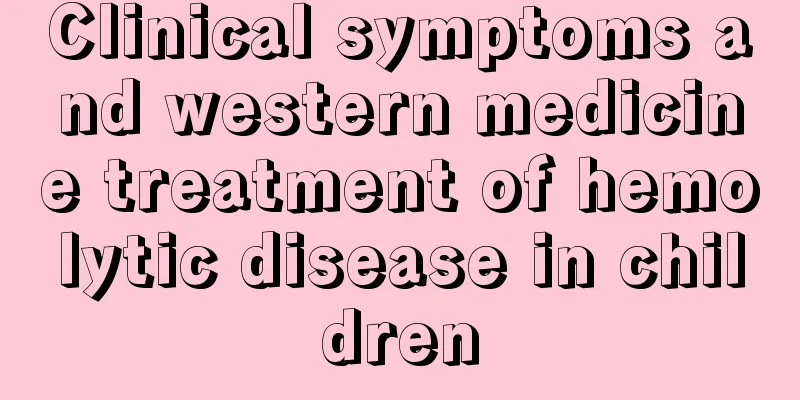What should I do if my child has abscesses?

|
Studies have found that most pustules on children are caused by folliculitis, acute cellulitis, boils, carbuncles, impotence, etc. To completely prevent the occurrence of this phenomenon, we must first determine the cause and then treat it symptomatically. In addition, we must keep the body clean and hygienic, take frequent baths, change clothes frequently, etc. Diet is also very important, and light food should be eaten. Spicy and irritating foods should not be eaten. 1. Causes of pustules on children 1. Folliculitis is the most common. Because the child's skin surface has poor antibacterial ability, coupled with unhygienic conditions or infection by pathogens, it is easy to form pustules; 2. Acute cellulitis is mainly caused by symptoms of Staphylococcus aureus infection, but it can also be easily caused by hemolytic streptococci, or it can be a mixed infection. It is often characterized by local redness, swelling, pain, and fever. 3. Furuncles or carbuncles. Furuncles are also very common diseases. They often occur after severe folliculitis infection, causing infection in the deep surrounding group of a single hair follicle. Carbuncle is the infection of multiple hair follicles on the basis of furuncle. Pustules will appear, and severe cases will be accompanied by fever and other symptoms. 4. Pustule sores are mainly caused by hemolytic streptococci or Staphylococcus aureus infection. They often occur in summer and are more common in children. The onset is relatively acute and is often accompanied by symptoms such as fever and pustules. Based on the analysis of the above reasons, considering that the pustules on the children's legs are accompanied by fever symptoms and it is summer, the most common cause of this situation is that it is directly related to the symptoms of pustules or boils infection. 2. What should I do if my baby has abscesses? 1. Keep the area clean, eat light food, drink plenty of water during fever, and avoid eating greasy and spicy food; 2. Be careful to avoid scratching the infected pustules and prevent cross infection or transmission to avoid aggravating the symptoms; 3. It is best to take systemic sensitive antibiotics and local medications for treatment, and pay attention to preventing the occurrence of complications; 4. If the fever persists and the pustular infection worsens, it is best to be hospitalized for observation to avoid delaying the disease. |
<<: What are the diagnostic criteria for myocardial damage in children?
>>: What is the value of pathological jaundice?
Recommend
When can a baby sit in a stroller?
Every family needs a child. Only with a child can...
What to do if your child is distracted in class
Inattention is not a problem exclusive to childre...
Causes of toothache in 6-year-old children
What causes toothache in 6-year-old children? Thi...
What to do if you are born with amblyopia?
Now we live in a high-tech society. People are st...
Should children be covered with blankets when they have a fever?
Fever is a normal reaction of our body. It often ...
Why is my 7 month old baby retching?
Sometimes we may feel suddenly nauseous, and if w...
How to prevent childhood obesity more effectively
Childhood obesity can be said to be relatively co...
Is it okay to give a child a bath if he or she has a fever?
For children, their bodies are not fully develope...
What is the fastest way to treat a child’s cough?
Children's physical resistance is relatively ...
Can children use air conditioning when they have a fever?
After entering the hot summer, due to the neglige...
What is the color of a full-month baby's stool?
Babies cannot express their thoughts when they ar...
Tips to get rid of diapers at night
The baby's skin is very delicate and can be e...
How long is a newborn baby normal in one month?
How long is a newborn baby in one month is one of...
What causes knee pain in children?
Children are the most precious treasures in every...
What to do if your one-year-old baby is deficient in zinc and calcium?
Many mothers are very concerned about the physica...









